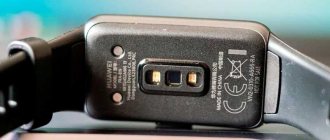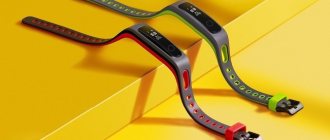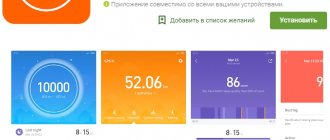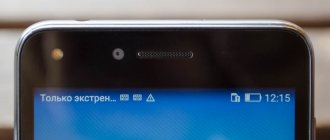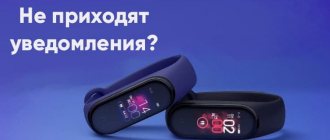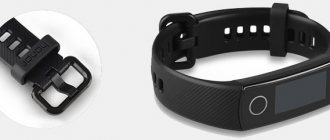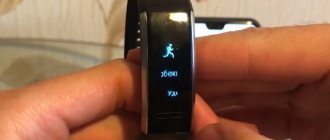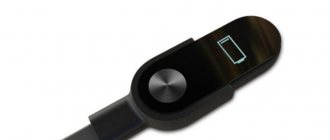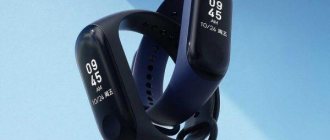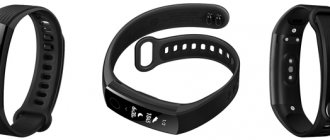Sws headset effect what is it
In modern device production, one can increasingly notice the presence of this opportunity. First of all, it provides the user of the equipment with sufficiently spacious sound quality. Moreover, the indicators and characteristics of the melody do not decrease when used, but on the contrary, they improve. The feeling can be compared, for example, to the sound of an audio recording on speakers, however, the difference is that the file is played directly in its own individual form.
ATTENTION! It is believed that the described improvement method is not suitable for all genres of work. So you should first familiarize yourself with the best options. That is, the result may not always be ideal, especially since it is just software processing of a particular sound.
Thus, we can highlight the following main advantages of using the presented effect:
- Providing 3D audio effect;
- Acts as a music amplifier;
- So to speak, it tightens the highest frequencies, that is, it directly expands the frequency range;
- Raises the volume to 10 percent;
- The sound is not only complete, but also with the absence of various distortions when playing the file;
- Gently affects the upper bass, thereby creating “depth” of the sound.
Consequently, some models provide the ability to enable sws technology even when playing videos. For example, this primarily concerns the manufacturer Honor.
What is the sws headset effect
As they say, it takes three generations to make a gentleman. This is also true for Huawei tablets. Since the launch of the very first M1 tablet, the company has worked hard to ensure that the brand is associated with great sound. It is natural that the third generation M3 tablet has received wide recognition and high praise from consumers. Huawei MediaPad M3 Lite is a high-quality audio and visual entertainment device designed with special attention to audio quality and sound effects processing. The target audience of the product is young people who prefer to use tablets to watch TV series and movies at home, as well as spend their free time playing games. Therefore, an important factor, in addition to a clear and bright image, is high sound quality. For such users, the MediaPad M3 Lite is an ideal choice.
Specifications MediaPad M3 10 Lite:
| Shell, OS | EMUI5.1, Android™ 7.0 |
| SIM card type | Nano |
| Number of SIM cards | 1 |
| Weight g | 460 |
| Size | 241.3 x 171.5 x 7.1 |
| Screen type | IPS |
| Diagonal (inches) | 10.1 |
| Screen resolution | 1920 x 1200 |
| Pixels per inch | 224 |
| Built-in memory | 16 GB, 32 GB |
| RAM | 3 GB |
| microSD memory card support | Up to 128 GB |
| Processor, Number of cores | Qualcomm MSM8940, 8-core, A53(4 × 1.4 GHz +4 × 1.1 GHz) |
| Main camera (MP), Front camera (MP) | 8 MP, 8 MP |
| 2G | 850/900/1800/1900 MHz |
| 3G | HSDPA+ (up to 42 Mb/s) |
| 4G | LTE Cat4 up to 150 Mbps |
| LTE frequencies | LTE-TDD: 38/40/41, LTE-FDD: 1/3/5/19/7/8/20 |
| WiFi | 2.4 GHz / 5 GHz |
| Bluetooth | Bluetooth 4.1 |
| Battery capacity (mAh) | 6660 mAh |
High quality sound
Huawei collaborated with Harman to develop the MediaPad M2 Lite, whose high-quality and immersive sound helps ensure a completely immersive experience. Huawei MediaPad M3 Lite 10 is equipped with four independent speakers, which allows you to get a wide sound field with full coverage. MediaPad M3 Lite 10 also supports smart channel switching. The built-in capture sensor automatically routes sound from the four speakers to the left and right channels, so the surround sound field precisely adjusts to changes in capture, in both portrait and landscape screen orientations. This way, no matter how you hold the device, you can enjoy its sound quality.
With such a powerful device, good sound is absolutely natural. Imagine coming home and sitting on the couch listening to “Something Just Like This” by The Chain smokers and Coldplay. A dynamic melody, a magnetic, penetrating male voice and powerful drums make users immerse themselves in the music, forget fatigue and quickly fill up with energy. That's exactly the power of the MediaPad M3 Lite 10.
Joint technologies of Huawei and Harman Kardon
For nearly 60 years, Harman Kardon engineers have been developing some of the world's most sought-after speakers and sound reinforcement systems. In 2017, Huawei and Harman once again joined forces to create the M3 Lite series of tablets. From design and speaker model selection to debugging and final sound quality assessment, both parties have worked closely together to offer users the best possible sound experience that demonstrates their appreciation and expertise. Therefore, the Harman Kardon logo on the device symbolizes not only the strong partnership of the two brands, but also their commitment to providing users with quality sound.
SWS 3.0, Huawei's own technology
Huawei's SWS3.0 (Super Wide Sound) technology can create an incredibly wide and spacious sound field, making the sound more dynamic and energetic. Super Wide Sound technology also automatically recognizes a variety of scenarios, such as listening to music and watching movies, depending on the type of application, and optimizes accordingly. In Music mode, the sound is more melodic and soft thanks to balanced highs, mids and lows; When watching movies, it automatically switches to cinema mode and activates SWS3.0 sound effects, giving the user the feeling of watching in a real cinema with dialogue emphasis, expanded surround sound field and bass enhancement. When watching Saving Private Ryan, directed by Steven Spielberg, SWS technology will present you with a wider battlefield than a regular tablet. All the sounds - bullets, warplanes, shells and the speech of the main actor - penetrate your ears from all sides, creating an exciting battle scene and allowing you to experience the same anxiety and fear as the main character.
The MediaPad M3 Lite 10 tablet is already available in Russia, complete with a network adapter and a USB cable. The device can be purchased in two versions: • 3 GB RAM + 16 GB ROM at a recommended retail price of 20,990 rubles in a gray body color • 3 GB RAM + 32 GB ROM in gray and gold versions at a recommended retail price of 21,990 rubles.
Content
Characteristics
- Class: tablet
- Case materials: plastic and metal
- Operating system: Google Andro />
Introduction
Not long ago we already got acquainted with the Huawei tablet – MediaPad M3. The test was so detailed that in this case it is worth making some adjustments and including experience of use. Let me remind you that the key features of this device are a thin body of 7.3 mm, low weight - 310 grams, a metal body, high screen resolution, etc. In addition, the M3 has a music processor and an amplifier to drive two stereo speakers.
The premium version of the device arrived for review. It differs from the regular version not only in its maximum parameters (4/64 GB), but also in the inclusion of AKG H300 headphones. “Ears” are created specifically for Huawei. Also included in the kit you will find a 2 A network adapter (fast charging is not supported), a SIM extractor, a USB cable and “waste paper” in the form of various instructions.
Unfortunately, at the moment there is no information about the price and release date. I assume the end of October, the cost is around 30,000 - 35,000 rubles.
Design, dimensions, control elements
The device has a rectangular shape, slightly sloping corners, the back panel smoothly transitions to the sides. In general, the M3 resembles the company's smartphones. The frame of the device is made of metal and processed on a special five-axis machine (5-axis CNC Machine) with program control, the chamfers are ground. On the reverse side there is a plastic strip for antennas and a plastic insert on top for signal transmission. Dimensions – 215.5 x 124.2 x 7.3 mm, the tablet weighs only 310 grams. The total thickness of the gadget is 7.3 mm, and the minimum narrowing is about 5 mm. That is, in the hand it feels very thin.
The case is quite dirty, fingerprints remain, but the prints are erased quickly. The glass is slightly curved and creates a 2.5D effect. The oleophobic coating is of high quality, the finger glides easily. The tablet will be available in two colors: gold and silver. Both colors look good. Most of the front panel (about 82%) is occupied by the screen.
What does sws headset mean?
When translated literally, the phrase is Super Wide Sound , which, accordingly, means “super wide sound.” Every year this proprietary feature is becoming more and more popular, since the greater depth of melody in each track is in great demand both among users and among potential buyers.
Perhaps few people would refuse to provide surround sound through a special concentration on certain basses. Consequently, manufacturers take as much care as possible about future owners, thereby providing their products with high-quality audio reproduction, namely the vacuum type.
Huawei Histen - what is this application?
Among a large number of different software for improving the performance of a smartphone, it occupies a leading niche in the section of improving sound through a headset. Exclusive algorithms for working with sound, the secret of which Huawei does not disclose to the public, help create various effects and change dynamic playback in a way that is convenient for the user.
Huawei Histen can be used for three types of audio headsets:
- on-ear headphones;
- plug-in;
- vertical.
Histen technology has two basic sections with which the client controls the music:
In the first section of the technology, there are ten tuning bands where the user manually adjusts the frequency, style, bass, etc.
The second section adds volume to any sound and takes the listener into live listening mode.
External noise suppression
Among the technical characteristics, the main thing was the presence of noise reduction in the headset. There are two types of it:
- Suppresses the sounds of the operator's surroundings and leaves only his voice for the subscriber.
- Suppresses external noise around the operator for the operator to better listen to the customer.
That is, one is for the subscriber and the other is for the operator.
The simplest implementation of noise reduction for a subscriber is this: -10 decibels for everything from the microphone, and only the operator’s voice remains without the neighbor’s drill, the sounds of conversations of other operators and the sound of keys. If you are unlucky, the voice is also partially cut on some sounds.
Manufacturers approach the problem in different ways. In our case, for example, the following microphone is implemented on the Plantronics EncorePro HW710 headset:
In call center headsets, noise reduction is usually implemented as simply cutting off part of the spectrum and narrow directionality. With the HW710 (and in general the entire line starting with it), you can’t hear the operator’s breathing, despite the fact that there seems to be no pop filter on the microphone. This is most likely due to the fact that it is located some distance from the exhaled air flow, but at the same time quite close to the mouth for sufficient sound pressure. Throughout the 700 series there are telescopic microphone booms with precise positioning. That is, 10 degrees left and right - and the operator is heard worse than with the correct microphone position. This design is optimal for now, based on the experience of using microphones in military, medical and emergency response centers in different countries.
As for noise suppression for the operator, there are very simple solutions - from very large and dense ear pads (physically isolating the ears) to the good old system of supplying antiphase sound waves. This requires an external microphone to record sounds from outside, but does not require a complex audio processor, so the two systems can be kept separate. Well, noise reduction also does not require the operator to dampen all external noise at all - if a dog is barking nearby under the window, somewhere another operator is talking to his subscriber and the mouse is clicking - the subscriber does not need to hear it. And the operator only needs to reduce the volume of these sounds to increase speech intelligibility in the headphones. Perhaps this is why this part of the system is extremely rarely made expensive. For example, in the Dect Savi 8220 there is a noise reduction on the reverse wave, but it is deliberately made, based on the experience of use in different CCs, not to completely clear the sounds from the outside, but to muffle them very much.
It’s also interesting that many of the headsets in the tests had remote controls on the cable, on the body, or on the base station (if these are wireless headsets) like this:
As you can see, there is a call button, a headphone volume control, and a microphone on/off switch. In our tests, we did not find a button to turn on/off the noise reduction on any model; this is usually configured somewhere in the depths of the application settings during configuration.
Where to download and how to configure?
The mobile application is available for download on the official Play Market platform and App Gallery. Enter the name in the search bar, go to the page and click “Download the application”, and install it on Android.
Important! Do not download APKs from third-party sources as they often turn out to be harmful to devices.
The setup algorithm is simple:
- Connect headphones to your phone.
- Go to settings mode on your smartphone.
- Open the “Sound” tab there.
- Click on the item “Huawei Histen Audio Effects” (the line is displayed only when the headset is connected to the smartphone).
- Select the type of headset.
- Next, go to the application and adjust the sound itself.
